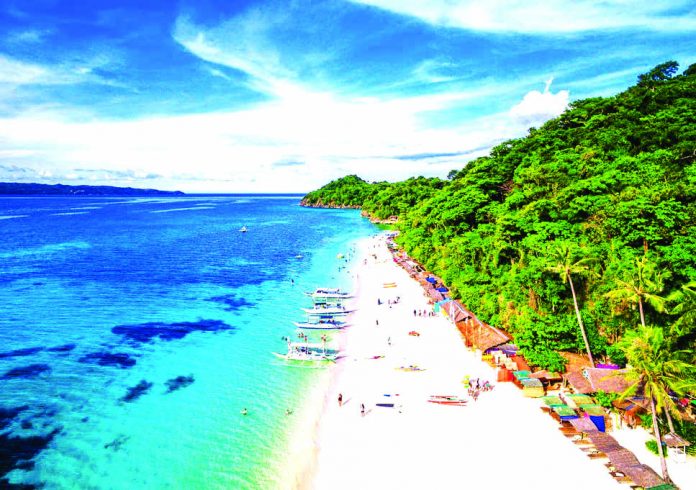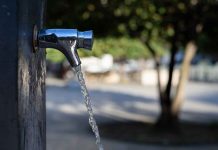
BORACAY – Authorities is again mulling the implementation of moratorium for building construction in this world-famous island.
Environment Undersecretary Epimaco Densing III cited a recent study revealing that this world-famous island has already exceeded its tourism, population and physical carrying capacity.
“Boracay is the face of Philippine tourism to the world and we should not allow that the problems of the past will resurface at the expense of this island,” he said on Tuesday during the Boracay Inter-Agency Task Force meeting. He is wary that if it remains unacted upon could threaten yet again the environment of the Boracay.
According to Densing, the Boracay Inter-Agency Task Force will air this concern to the local government unit and suggest the implementation of a construction moratorium to arrest the prevailing problem.
A moratorium is a temporary suspension of an activity or a law until future events warrants lifting the suspension or related issues have been resolved. A moratorium may be imposed by a government or by a business.
In a report submitted to Environment Secretary Roy Cimatu by the Coastal, Resources and Ecotourism Research, Development and Extension Center (CRERDEC), it said that Boracay’s swimming and beach areas have already exceeded the actual tourist arrival per day.
The report was submitted on Oct. 24 this year by Lawyer Simmonette Lim and Maechelle June Blanca of CRERDEC, a center under the Department of Environment and Natural Resources Ecosystems Research and Development Bureau which coordinates all technological researches undertaken by the research center.
TOURISM CARRYING CAPACITY
The report cited the allowable number of tourist that can be permitted to enter Boracay per day, which is 6,405 – considering that tourists stay an average of three days in the island while its over-all tourism carrying capacity is 19,215 persons per day.
The number of tourists and locals already exceeded this allowable number, stated on the report.
However, in a summary of verified tourist arrival bound to Boracay Island, Grecil Taunan of the Malay Tourism Office said that the total arrivals from Nov. 1 to Nov. 25, this year, recorded only a total of 111,290 thereby recording only an average daily arrival of 4,452.
PHYSICAL CARRYING CAPACITY
According to the same report by CRERDEC, the carrying capacity of the island has also already exceeded.
Physical carrying capacity is the maximum number of structures and use units that can be built and raised in an available area that will not affect the existing environment in its natural processes considering all possible limiting factors.
Two maps, according to the report, served as the basis for the computation of the physical carrying capacity of Boracay Island. The first map was digitized from the existing Land Use Map of Malay (Municipality of Malay CLUP, 2013), which illustrates the zoning of existing alienable and disposable lands for residential, commercial, and tourism use. And the second map used was based on Proclamation No. 1064, which designates the areas within the Island for protection purposes (forestlands) and for Alienable and Disposable (A&D), which is in turn overlaid with the CLUP map classification for residential, commercial, and tourism areas.
If we will base the carrying capacity on the CLUP Map, the report shows that residential areas exceeded to 4,984 structures
since the allowable residential structure is only 5,266 as against to the
existing structure which is 10,250.
For its part, big businesses with lodging and accommodation services also
posted a number of 430 structures as against to the allowable 292.
Meanwhile, those marked as “other business establishments” almost doubled in
number as the allowable number of structure is 1,754 as against the existing
structure of 2,779.
POPULATION CARRYING CAPACITY
The population carrying capacity, according to the same report, records an excess on a daily basis in the island.
Population carrying capacity, it said, is the maximum number of individuals that can be supported sustainably by a given environment.
“The Sustainable Accommodation through Feedback Evaluation (SAFE) Model was employed in calculating the population carrying capacity of Boracay Island. The specific area for a particular land use value for computing Population Carrying Capacity was based from the CLUP of Malay (2013-2022) and Proclamation No. 1064,” the report said.
The computed carrying capacity is 36,542 and 35,730 for CLUP and Proclamation No. 1064 respectively.
Comparing the total population carrying capacity with the current population, there are 15,024 (CLUP) to 15,836 (Proclamation No. 1064) people in excess on a daily basis in Boracay. The existing population is 70,781.
FAILED MORATORIUM
The first recorded construction moratorium on Boracay Island was on April 2012 during the time of Malay Mayor John Yap following the alarm that the massive development in the island could pose a bigger problem in the future which might be far worse than the coliform issue in 1997.
He declared the moratorium on the
strength of Resolution No. 026, series of 2012, due to unabated
commercialization, uncontrolled migration, and presence of informal settlements
and illegal constructions back then.
But due to its “exemption clause”, the moratorium did not seriously bring a positive
effect on the island.
Exempted in the order were the construction
of residential house at owned property, construction with an investment of P20
Million and above for outsiders and P5 Million for Malaynons, institutional centers,
utilities of infrastructure vital to community and industry, those with pending
applications for building permits, and those constructions classified as under
renovation and/or expansion within its present vicinity.
Observers said that had the moratorium was properly implemented without
exemptions, it could have spelled the difference and the closure of Boracay
could not have happened. (Noel Cabobos/RadyoTodo/88.5FM)






